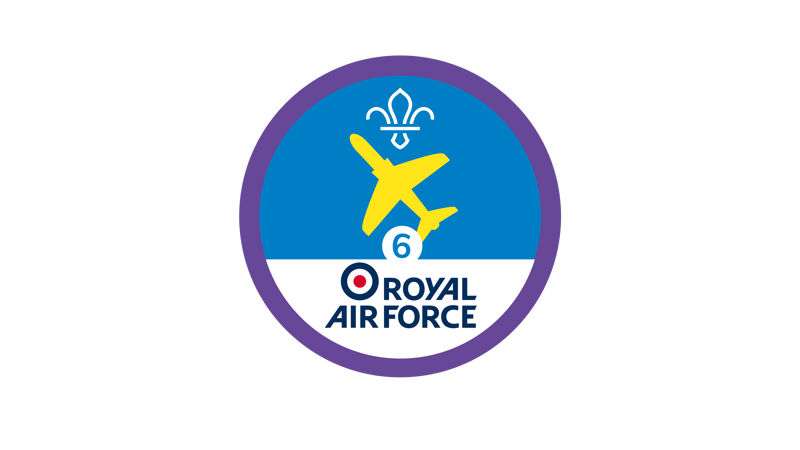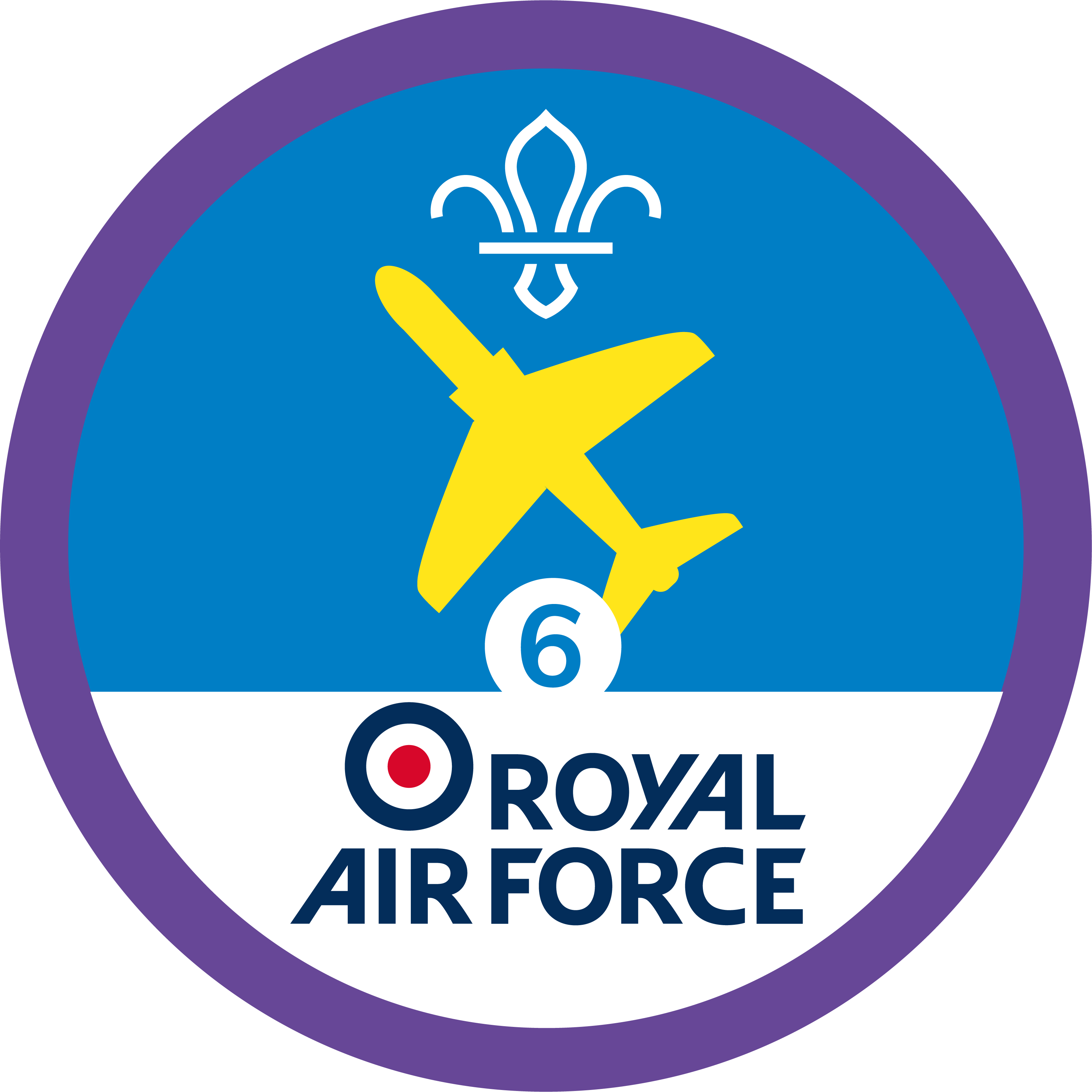
Indicator creators
You’ll need
- Pens or pencils
- Scissors
- Scrap paper
- Craft materials (for example, tissue paper, pipe cleaners, stickers)
- Black card
- Chalk (white, red, yellow and green)
- Split pins
- Internet access, as needed
- Analogue clock, as needed
- An aircraft’s magnetic compass works exactly the same as an ordinary compass, with the needle pointing towards the North Pole. It needs to be kept clear of other electrical components, which cause a kind of interference called ‘deviation’ that can move the needle. It also needs to be adjusted to correct the ‘variation’ between ‘true north’ and ‘magnetic north’, which can be done with a navigator’s map or chart.
- Compasses work well when you’re on a constant, level bearing, but can be wrong in flight, where you often pitch, roll, turn, accelerate and slow down.
- ‘Acceleration or deceleration error’ is characterised by a compass in the northern hemisphere pointing north as you speed up and south as you slow down, with the reverse happening in the southern hemisphere.
- ‘Turning error’ is where a compass veering north will briefly show a turn left as the plane banks right, and vice versa, while a compass veering south will briefly show a turn in the same direction as flight.
- Flying over the pole causes ‘Magnetic dip error’, as the magnetic pull of the pole attracts the needle downward, with the magnet dipping down during turns.
- Navigators use a heading indicator with a gyroscope to correct compass errors.
- A gyroscope will always stay in the same position, so long as its wheel is spinning. This means that the heading indicator can be relied upon to keep pointing the right way, without any interference. Only when the plane moves will the heading indicator readout change.
- The ‘heading’ of an aircraft is the direction it’s pointed in. This is displayed using 360-degree compass points, with magnetic north representing ‘north’ if set with a compass. The readout digits are in 30-degree segments, with the final zero missing (so 270 degrees reads as 27).
- Attitude indicators (more commonly known as the ‘artificial horizon’) and turn indicators also use gyroscopes. Find out more about them here.
- Heading indicators do need to be regularly reset when on a level bearing, using a compass. This is because gyroscopes can drift over time, while the friction caused by the spinning wheel can also cause an error called ‘precession’.
- Pressure instruments in aircraft work on something called the ‘pitot-static system’. It compares static air pressure to ram air pressure. Static air pressure is the pressure of the air around the aircraft, which decreases as altitude increases. Ram air pressure, measured by a ‘pitot tube’ on the wing, is the pressure of the air forced into the tube in flight.
- The airspeed indicator measures the aircraft speed, relative to the air moving past, in knots and miles per hour. ‘True’ airspeed is calculated by comparing ‘moving’ ram air pressure and ‘undisturbed’ static air pressure. The instrument has different coloured sections to show the stall speed, ‘never-exceed’ airspeed and the safe flap operation speeds.
- The vertical speed indicator also uses the aircraft pressure system. Find out more about that here.
- The altimeter measures how high the aircraft is above sea level, by calculating the difference between static air pressure and pressure capsules inside the instrument. Accurate pressure readings from a barometer are also needed to pick up local pressure changes. The large numbers on the instrument mark hundreds (short-hand) or thousands (long-hand) of feet. A small, striped window appears when the aircraft drops below 1000 feet to let the pilot know they’re close to the ground.
- Split into groups of two or three people. Distribute some copies of the ‘Instrument panel’ sheet, so each group can see one for reference.
- Read out the relevant information from the boxes above.
- Each group should choose an instrument to focus on and spend a few minutes finding out about how it works.
- Once everyone’s got to grips with their instrument, they should feed back to the other groups how the instrument they chose works and what it measures.
- Give out sheets of black card, split pins, chalk and craft materials. Explain that everyone will first be making a heading indicator. They should start by drawing a large circle in the centre of their black card and marking north, south, east and west (as they’d be on a compass) on the inside of the circle.
- Complete the face of your circle by adding marks every 30 degrees. Write the number of degrees of each mark, but without the zero on the end, so the first mark clockwise from north (30 degrees) should be ‘3’ and the second (60 degrees) should be ‘6,’ and so on.
- On a second sheet of card, draw a small outline of an aircraft. This should be small enough that it fits inside your circle without obscuring any of the digits. Cut it out, place it in the centre of the circle and stick the split through the middle, fixing it in place. Check that the circle can rotate freely with the aircraft cut-out held in place.
- Explain that everyone will now be making an altimeter. They should start by drawing another large circle on fresh card and mark out the numbers zero to nine, equally spaced, around the inside edge.
- On some spare card, draw two arms like you would see on a clock, one large and one small. Make sure the base of each arm is wide enough that a split pin can comfortably pierce that point without it tearing, and colour the arms white with some chalk. Cut these out, hold the base of each arm at the centre of the circle and pierce with the split pin. Check that the arms turn freely, but don’t unfold the legs of the split pin just yet.
- From your circle, cut a small window above the number five and below the centre point. Careful not to cut off the arms! From the spare card, cut a smaller circle and decorate with a striped pattern in one quarter using the white chalk. Stick the middle of this circle through the split pin to attach it to the back of your larger circle and check that it can rotate freely. Check that the striped pattern appears through the small window when the circle is rotated. If it does, you can now fix your split pin in place.
- Explain that everyone will now be making an airspeed indicator. On more card, draw another large circle and mark miles per hour (mph) around the inside of the outer edge from 40 to 200, going up in increments of 20.
- As with the altimeter, draw a long arm to cut out and attach to the circle. This instrument only needs one. Remember to colour it white with the chalk.
- With the other chalk, mark the important speeds on the indicator face by colour-coding the readout at the outer edge. You could have 60-140mph green, 140-190mph yellow and 190-200mph red. Between 60mph and 120mph, add a solid white line in chalk round the edge too.
- Arrange the finished instruments as they would sit on the panel in the aircraft cockpit. You could find a picture of this online, or simply arrange them in a T-shape, which is the standard pattern. Artificial horizon top centre, airspeed top left, altimeter top right and the heading indicator bottom centre. A turn indicator is usually under the airspeed and the vertical speed under the altimeter.
- Everyone should set up their instrument panels at one end of the room, all set to zero. Everyone should stand on the opposite side of the room, with each group facing their panel. The person leading the activity should explain that they’ll be calling out an aircraft airspeed, heading and altitude. Groups should aim to set their indicators to these figures as quickly as possible.
- One person from each group should be assigned to set each instrument. When the readings are called out/displayed, the person leading the activity should shout ‘Go!’, and everyone should configure their indicators as instructed, with each person taking care of their instrument.
- Check the readouts and keep playing until everyone has set their panel correctly. Play again if everyone enjoyed it. The winning team could try to lead the game, or questions could be added about whether the plane is turning, climbing or descending.
Reflection
Groups had to work together to construct their instruments and their panel, before teaming up to try and succeed in the race to set their indicators to the correct values. Pilots and navigators need to be able to read their instruments in difficult circumstances so that they have the information they need when it matters most. Did you rush to set your instruments to the correct values, or were you more considered in your approach, making sure to set each indicator with care and get it right the first time? Did anyone take the opportunity to change another group’s indicator, or did you prefer to focus on your own? Speed of thought, decision-making and accuracy were all key, just as they are in the skies.
Safety
All activities must be safely managed. You must complete a thorough risk assessment and take appropriate steps to reduce risk. Use the safety checklist to help you plan and risk assess your activity. Always get approval for the activity, and have suitable supervision and an InTouch process.
- Scissors
Supervise young people appropriately when they’re using scissors. Store all sharp objects securely, out of the reach of young people.
- Active games
The game area should be free of hazards. Explain the rules of the game clearly and have a clear way to communicate that the game must stop when needed. Take a look at our guidance on running active games safely.
- Groups could research specific kinds of aircraft for which to create instruments. Different aircraft have different V-speeds, for example, so the size and power of their aircraft will impact how they make the indicator. If there’s time, groups could make a full bank of instruments, including a vertical speed indicator, artificial horizon and turn indicator to add to the panel, using this information to help.
- In the panel setting game, a rule could be added where individuals in groups can choose to change another group’s indicator instead of correctly adjusting their own. Readouts indicated could be made more complex. The instruction could just be ‘stall speed’, rather than a specific number, or using knots instead of miles per hour.
- Make sure everyone has everything they need to complete the task in this activity. Have groups work closely together to assist anyone who might struggle with the fine motor skills needed to craft the indicators.
- Remove the competitive and running elements from the final game if some groups are less mobile than others. Simply see who can set their indicators most efficiently.
All Scout activities should be inclusive and accessible.
You could extend the final game and use some maps to plot journeys from one point to another, challenging teams to set their instruments correctly as if they were navigating the route.
You could arrange a visit to a real aircraft cockpit to see the instrument panel first-hand. Bring along a photograph of your own work to compare to the real thing. Ask a pilot what it’s like to rely on these instruments.
Groups were responsible for their own instruments and making sure their dials could move freely for when they were needed.
